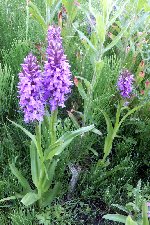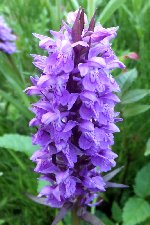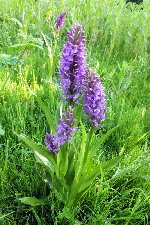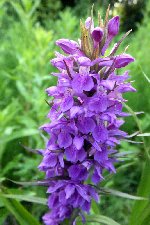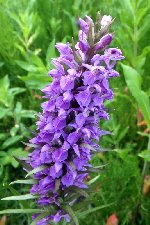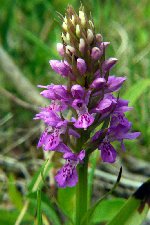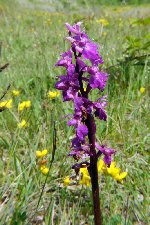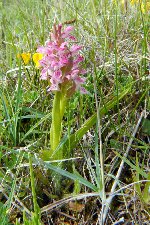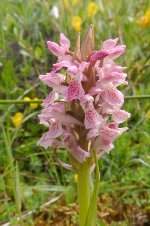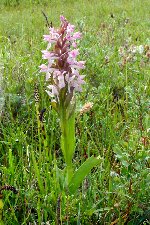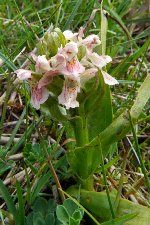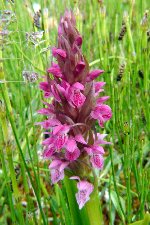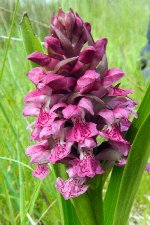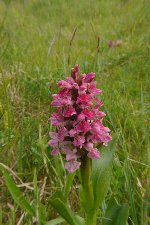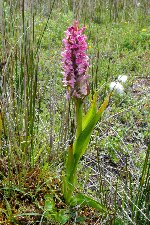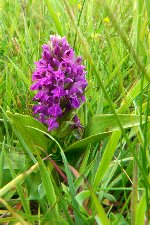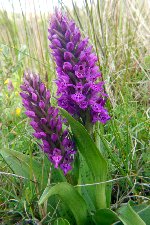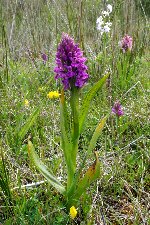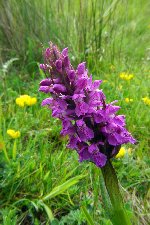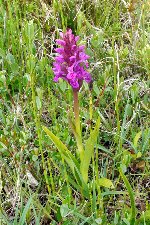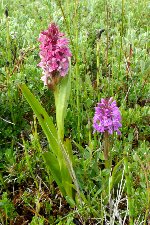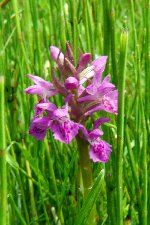|
|
|||||||||||||||||
|
|
|||||||||||||||||
 |
|
Gowy Woodlands 28th May 2018 (SJ 44600 71343) The numbers of Southern Marsh Orchids here is increasing year by year. I counted 20 in 2016, 40 last year, and today there is about 100. Clearly the site is evolving, also evidenced by how this year the orchids are being crowded out by thistles, willowherb and horsetails. The Southern Marsh still seem a bit atypical, but no doubt others will say they are within normal variation. While most here are quite robust plants, there are a couple of quite tall ones reaching 70 cm. No mean feat for a colony that is quite recently established. In terms of colour the flowers are a deeper purple than the normal washed-out appearance - and some have lips with a double loop marking more typical of Early Marsh Orchids. The possibility of a dash of EMO DNA in this population was mentioned after our first visit here. Minera Quarry 29th May 2018 (SJ 25156 52172) We came in hope of catching the Northern Marsh Orchids and the other Dactylorhizas early on, but it is just too early for much. We do find a few, but they are barely in flower and they seem to be the smallest specimens possible. A group of about 10 closer to the pond are unlikely to survive the pond-dipping activity this coming Saturday. Yes, the quarry has been acquired by the North Wales Wildlife Trust and there will be a grand opening day. We meet and have nice chat with Simon Mills of the NWWT about the open day, orchid sites across the UK, plans for the quarry, and the forthcoming HOS trip which he will be co-leading with Sue Parker. Talacre Dunes 30th May 2018 (SJ 11308 84954) Why are we driving here today, with no real expectation of a great result after yesterday's slight disappointments? Well, other years we have been here a bit too late for the Early Marsh Orchids proper (just a few late flowers) so hopefully we may do a bit better. In fact it is a case of how wrong can you be - there are hundreds of them, both Dacylorhiza incarnata incarnata and especially D. incarnata coccinea. The former seem to be weaker, more fragile plants, and the latter boast some real brutes. There is also a good number of Northern Marsh Orchids although not where we have seen them before, so it is possible or probably that the early flowring plants of this species are where the Rarly Marsh grow. Again many of these are small but robust plants, and then there are some much larger versions. Given that all three taxa grow together it is highly likely that there is some intermixture of DNA. Just how do you decide where incarnata ends and coccinea start of a gradient of pink colour? Some of the Northern Marsh seem to have features obtained from the Early Marsh. Great stuff. And I spot a couple of Common Twayblades yet to open up their flowers.
Howardian Nature Reserve, Cardiff 31st May 2018 (ST 20631 78672) This reserve, set within the city, is said to host a few orchid species. But it was not a successful trip. The clearing were just too overgrown to spot Bee Orchids and possibly even Southern Marsh. All I saw were some Broad-leved Helleborines coming up along the path in one wooded area. I even managed to get lost and found myself at an exit with a padlocked gate. And then the thunderstorm began!
|
|
|
||||||||||||||||||||
